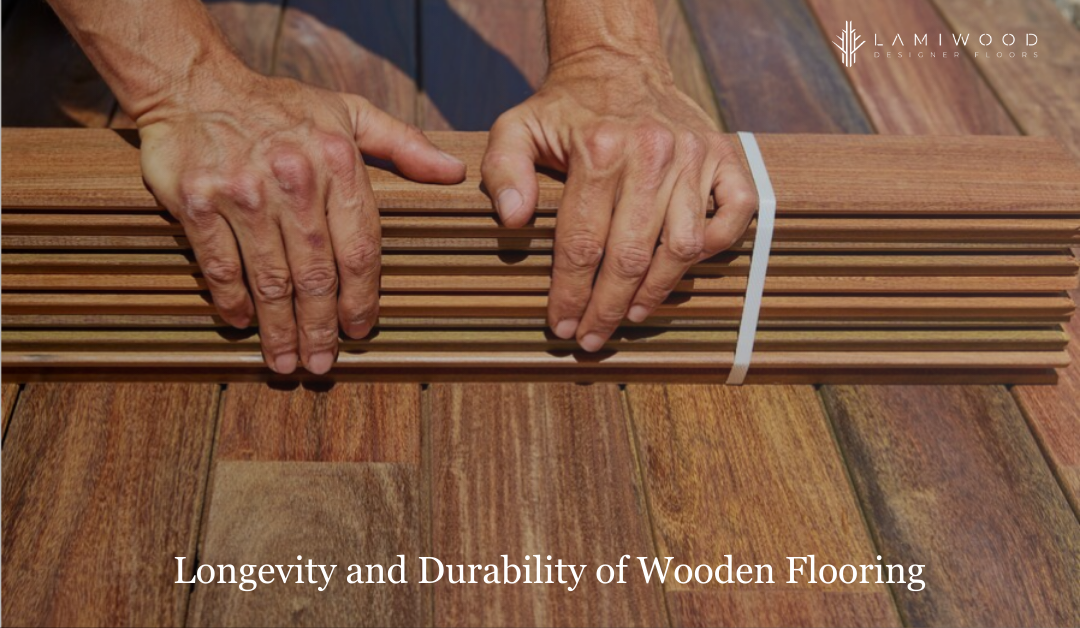When investing in new flooring for your home or office, longevity and durability are key factors to consider. wooden flooring has gained popularity in recent years due to its affordability, versatility, and resistance to wear and tear. But just how long can you expect your wooden flooring to last, and what factors contribute to its durability? Let’s explore the expert’s take on the longevity and durability of wooden flooring.
Factors Affecting Wooden Flooring Durability
Several factors can impact the longevity and durability of your wooden flooring, including:
- Quality of the product: Higher-quality wooden flooring, with thicker wear layers and denser HDF cores, tends to be more durable and resistant to damage than lower-quality alternatives.
- Installation method: Proper installation, including adequate subfloor preparation, moisture testing, and following the manufacturer’s guidelines, can significantly impact the longevity of your wooden flooring.
- Maintenance and care: Regular cleaning, prompt attention to spills, and using appropriate cleaning products can help extend the life of your wooden flooring.
- Room usage and traffic: wooden flooring in high-traffic areas or rooms with heavy furniture may experience more wear and tear than flooring in less frequently used spaces.
- Environmental factors: Exposure to direct sunlight, extreme temperatures, or high humidity can affect the stability and durability of wooden flooring over time.
Expected Lifespan of Wooden Flooring
On average, high-quality wooden flooring can last between 15 to 25 years, depending on the factors mentioned above. Some premium wooden products may even come with warranties of up to 30 years or more.
It’s important to note that the lifespan of your wooden flooring can be significantly impacted by proper installation and maintenance. Failing to follow the manufacturer’s guidelines or neglecting regular care can lead to premature wear and tear, reducing the overall longevity of your flooring.
Durability Features of Wooden Flooring
Wooden flooring is designed with several features that contribute to its durability and resistance to wear and tear:
- Wear Layer: The wear layer is the transparent, protective layer on top of the decorative layer. Thicker wear layers, typically measured in mils (thousandths of an inch), provide better resistance to scratches, dents, and fading.
- HDF Core: The high-density fiberboard (HDF) core of wooden flooring provides stability and resistance to impacts, helping to prevent denting and cracking.
- Click-Lock Installation: Many wooden flooring products feature click-lock installation systems, which allow for a secure, tight fit between planks and minimize gaps or movement that could lead to damage.
- Water Resistance: Some wooden flooring products are designed with water-resistant or waterproof features, helping to protect against moisture damage from spills or humidity.
- UV Protection: Certain wooden flooring products include UV protection in the wear layer, helping to prevent fading and discoloration from sun exposure.
Maximizing the Durability of Your Wooden Flooring
To ensure the longevity and durability of your wooden flooring, consider the following expert tips:
- Choose a high-quality product: Invest in wooden flooring with a thick wear layer, dense HDF core, and a reputable brand name for the best long-term performance.
- Hire a professional installer: Proper installation is crucial for the longevity of your wooden flooring. Consider hiring a professional with experience installing wooden flooring to ensure the best results.
- Follow the manufacturer’s maintenance guidelines: Use cleaning products and methods recommended to avoid damaging your wooden flooring and voiding any warranties.
- Use floor protectors: Place felt pads or floor protectors under furniture legs to minimize scratches and dents.
- Control room conditions: Maintain a consistent temperature and humidity level in your space to prevent excessive expansion or contraction of your wooden flooring.
- Address spills promptly: Clean up any spills or moisture immediately to prevent water damage or staining.
- Avoid harsh cleaning methods: Steer clear of abrasive cleaners, steam mops, or excessive water when cleaning your wooden flooring to prevent damage to the wear layer or HDF core.
When to Replace Wooden Flooring
Despite its durability, there may come a time when your wooden flooring needs to be replaced. Signs that it may be time to replace your wooden flooring include:
- Extensive wear and tear: If your wooden flooring shows significant scratches, dents, or fading that cannot be repaired, it may be time to consider replacement.
- Water damage: If your wooden flooring has experienced significant water damage, such as from a flood or persistent leak, replacement may be necessary to prevent further damage or mold growth.
- Outdated style: If your wooden flooring no longer complements your interior design or has become outdated, replacing it with a new style can refresh the look of your space.
Conclusion
Wooden flooring is a durable, long-lasting option that can provide many years of beauty and performance in your home or office. By understanding the factors that affect wooden flooring durability, choosing a high-quality product, and following proper installation and maintenance guidelines, you can maximize the longevity of your investment.
Remember to address any signs of damage or wear promptly and consider replacing your wooden flooring when necessary to maintain a safe and attractive living space. With the right care and attention, your wooden flooring can be a reliable and stylish foundation for your interior design for years to come.

